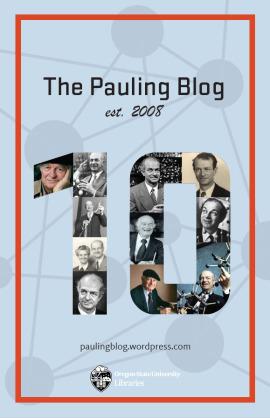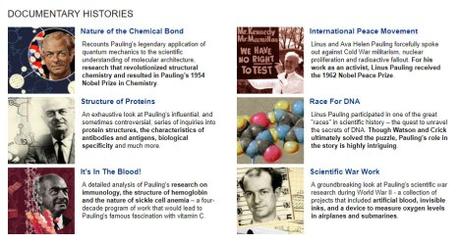
[Extracts from an interview by Tiah Edmunson-Morton with Chris Petersen, conducted on the occasion of the Pauling Blog’s tenth anniversary. This is part 2 of 4.]
Chris Petersen: [Once the Pauling Blog had been launched in Spring 2008] it took us a little while to figure out what we were doing. The early posts are short, they’re link-heavy, they traverse familiar ground related to Pauling, and they were twice a week. So that was a thing that we were doing. And it took us a little while to figure out what kind of resources one needs to operate a blog that publishes x number of times. And eventually we settled on once a week and the posts started getting longer.
So we started out from the origin story [described in part 1 of this series] to the next phase. And that, as I recall, was – once we had sort of done all the search engine optimization that we could think of – was to use the documentary histories themselves as a data source, or as a set of information that a student would be restricted to in telling a different story. So perhaps they are expanding upon something that was mentioned in the narrative of the documentary history or going down a different line of inquiry that could be supported by the documents that had been digitized into that resource. And that was the next step.
So we went from re-telling the same stories that had already been told to telling somewhat new stories that were not reliant upon the full collection for the research. Instead, it was an artificially constrained collection that the students were using to write. And part of that was just me not being totally sure if a student could handle the whole collection in terms of research and writing. But that was, I guess, the next phase of us branching out in terms of using the blog as a platform for something that was different from the original idea.
Tiah Edmunson-Morton: How did you decide what to write about? Or what to have students write about?
CP: Well, I’d been working with the papers for twelve years at that point, so I was pretty familiar with the mythology and the canon. And it was easier earlier on because, again, we weren’t really trying to do something new and original, we were trying to steer traffic.
And then beyond that, when we started to use the documentary histories as our source, it was, again, fairly straightforward for me to analyze that and think about, “well, this might be interesting to expand upon.” It’s basically thinking about, “here’s our [documentary history] website, it’s structured with a narrative and has supporting documents, and the narrative tells the story in a particular way. But Pauling’s life is so vast and sprawling in a million different directions that there are lots of ways that you can tease out small details.” So it was just sort of using my imagination as far as that was concerned.
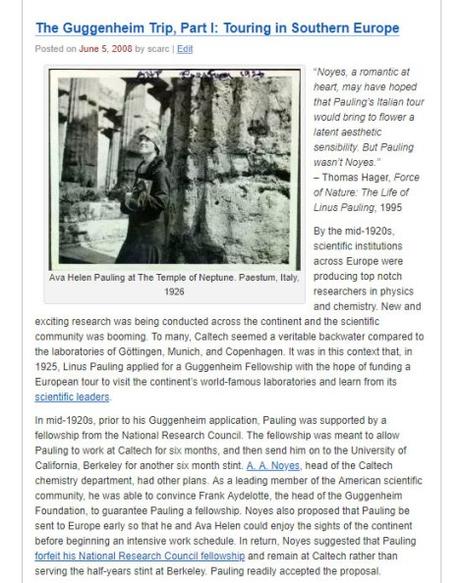
And I often knew what the outcome was going to be from that piece of research, just from my exposure to the collection. But it had not been written up or documented very well, at least on the web. It might have shown up in a biography somewhere. So I guess that’s how it happened.
TEM: Were there things that you carried forth from the time that you had actually worked with the papers, that you wanted to know more about?
CP: Later. I mean, that’s sort of where we’re at now actually. That’s become something that’s probably driven the blog more than anything else over the last two or three years, is me being interested in something and having a student go research it for me so I can learn something new. [laughs]
TEM: Did you imagine, in this second phase, that the blog would become a research resource in and of itself? That you would be pointing people in that direction who wanted to know more about Pauling?
CP: That’s a good question; I’m not sure. I think that it probably gradually happened over time. A lot of it was in the context of the department as well. For [the Special Collections department] – Pauling was the dominant presence in Special Collections for the whole time that it existed and the Pauling Blog was a piece of that ecosystem. So we had all the websites that we created, we had all the outreach that we were doing, and the blog was a part of both of those. But we were also in the middle of a project to document every single day of his life, which we got from 1930 to 1969, Linus Pauling Day-by-Day. And so that was the level of thinking in terms of resources available to researchers.
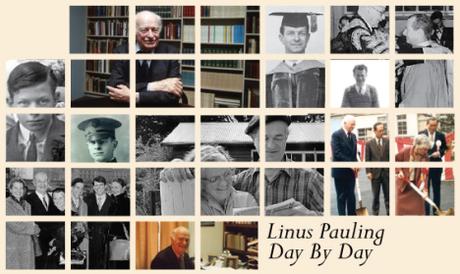
That situation has changed significantly and the connection to Special Collections that exists now is the Pauling Blog. And it’s a significant connection. But it’s become more valuable, I think, in that context, in the sense that the work that we’re doing related to Pauling now is the blog, and has been since 2011. So it’s not quite seven years now yet, but it’s a good amount of time in which that’s been the case. So it’s become more of a point of emphasis as a result of institutional change, I would say.
TEM: So rewinding to 2009 say, so you’ve been doing the blog for a year, what were some of the challenges that you were facing in those early year or two years?
CP: Well, I don’t really remember there being a lot of challenges because, at that point, we were still mining low-hanging fruit and we were filled with possibility and we had as many resources as we possibly could have wanted. It was mostly an issue of channeling energy and recruiting good people. And that is a continuing challenge, but we’ve been pretty fortunate as far as our success rate in that sense.
So the first writers for the blog were me and [SCARC Public Services Archivist Trevor Sandgathe]. Trevor was a student then and he and I basically co-founded this resource. At some point I realized that I wasn’t going to have as much time to do research and writing for the project, so I asked him if he knew anybody that was good and he did: his buddy. [laughs] And so I hired him. And they basically took over the research and writing at that point, and things just sort of evolved from there.
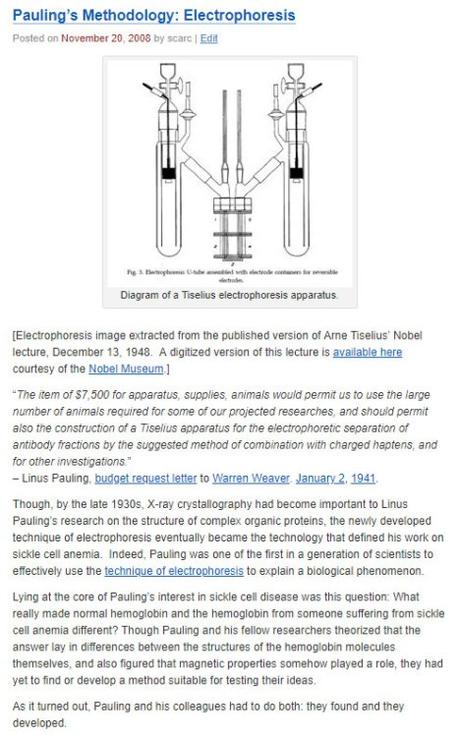
Early on we also had a graduate student who worked for us who, I don’t remember her circumstance but she was in Corvallis for a summer somehow, and I came into contact with her, and she had her own points of view and interests. And again, we hadn’t done a whole lot of writing at that point, so she could kind of dip into the collection and talk about the things that she was interested in. And the things that she wrote about were interesting and wouldn’t have occurred to me at that point. They were mostly about Pauling’s research methodology, so she wrote posts about electrophoresis and x-ray crystallography and that sort of thing, and it was great. So that’s how things evolved earlier on.
But in terms of challenges, I don’t think that there have ever been really significant challenges. We’ve been fortunate to have administrative support for the project from the beginning. I figured out at some point that it needs two students. The students who work for us usually work about ten hours per week, roughly. So about twenty hours a week of student assistance is required to keep the blog operating at its current level, which is posting once a week and the posts are usually about 1,000 words. And now we’re doing almost all original research, so it takes time, it takes talent.
And there’s never been any push-back on that. I mean, that’s 0.5 FTE for students and that’s significant. I think that there are probably plenty of archives where that is their whole student staff or maybe it’s more than their whole student staff. So I think the big challenge would arise if and when it was impressed upon me that we couldn’t afford it anymore, and that would probably be the end of the project. But it’s never even been introduced and I’m very grateful for that.
But beyond that, the other challenges would be finding good people to write – we’ve had good luck there. Also making sure that I have the time to devote to it, and I’ve gotten pretty efficient at this point so that’s not been an issue. And continuing to come up with ideas, and there’s a lot in that collection to write about, so that also has not been a huge challenge.
